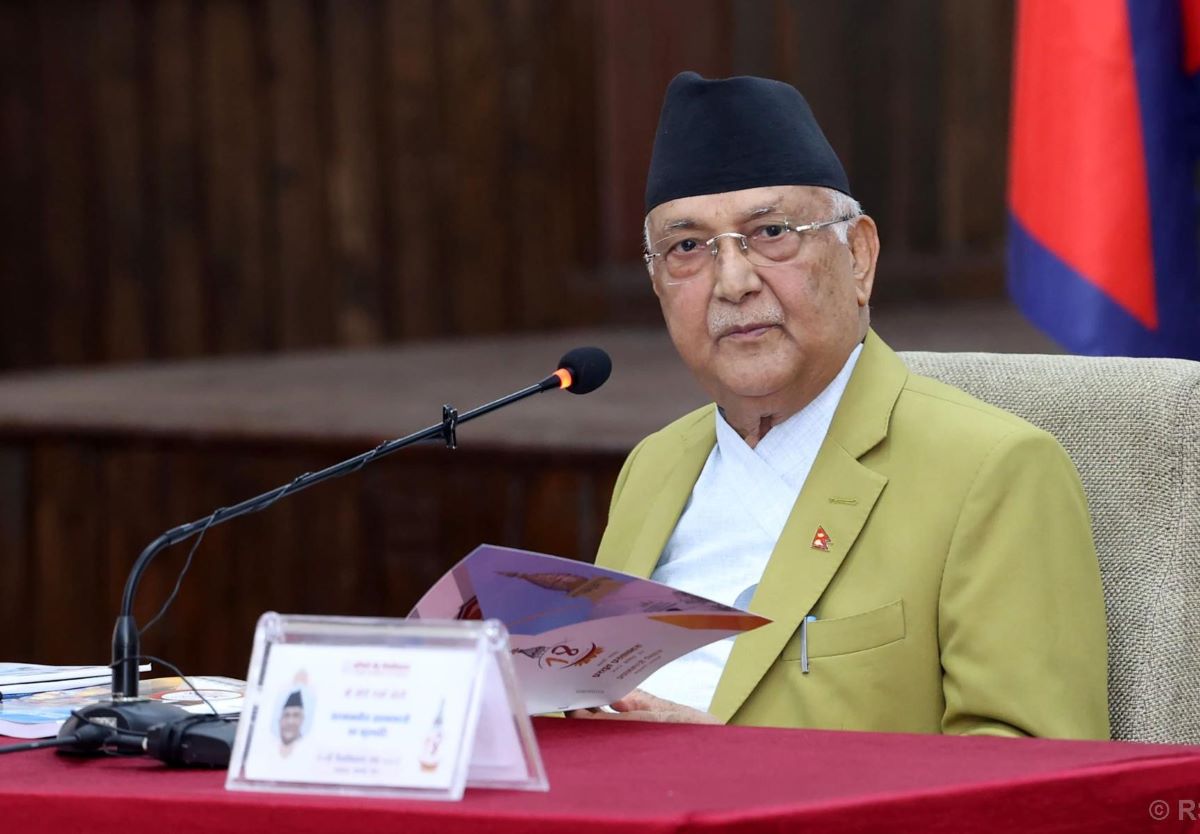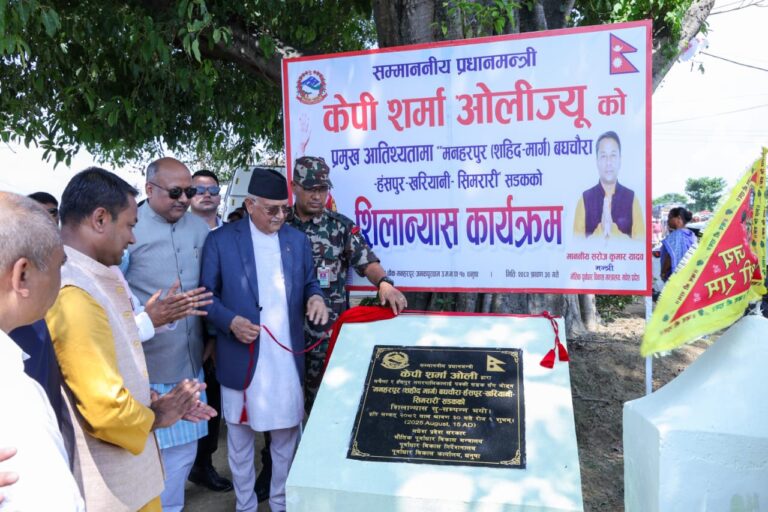
If the Prime Minister spends more time in party rooms than in Singha Durbar, and focuses on power- and self-interest-driven dealings rather than development, the country is pushed toward decline.

KATHMANDU: It is natural for anyone to be interested in the daily public activities of the country’s highest executive, the Prime Minister. To track this activity, Nepal News observed the daily engagements of then-Prime Minister KP Sharma Oli from May 1 to June 30, 2025. This news story is based on those observations.
Meetings and speeches
When analyzed by type of program, the then-Prime Minister attended meetings the most. Of all the programs he participated in, 56 percent were only meetings. In other words, one out of every two programs was a meeting.
Attending meetings is normal for a Prime Minister. However, nearly 18 percent of programs were organized solely for giving speeches, and about 12 percent were related to inaugurations.
During the two months of observation, the parliament was in session, so the Prime Minister’s presence was expected there. However, his presence in parliament was minimal, only four percent.
Other programs he attended included dialogues, conferences, foundation-laying ceremonies, and site inspections.
Political focus
When categorized by subject, most of the then-Prime Minister’s activities focused on political matters, including engagement with his own party and discussions with other political parties. For example, 12 percent of programs he participated in were related to economic issues, 10 percent related to his party organization, and 9 percent involved dialogue or negotiations with other parties.
Other activities included financial management (8 percent), environmental protection (7 percent), infrastructure development (7 percent), health (6 percent), good governance (6 percent), international or bilateral relations (5 percent), democracy strengthening (5 percent), education (5 percent), and justice including transitional justice (5 percent).
Notably, if the time spent on internal party work and negotiations with other parties—activities not directly related to development—is combined, it reaches 19 percent. One out of every five programs he attended was of this nature.
In a situation where right-wing forces were actively challenging democracy, the Prime Minister devoted only five percent of programs to strengthening democracy.
Organizers of Prime Minister’s programs
An analysis of which institutions organized the programs the then-Prime Minister attended showed that 17 percent were organized by government agencies or institutions, while 13 percent were organized by the federal government or the cabinet. Combined, this accounts for 30 percent, which is significant.
The then-Prime Minister participated in 12 percent of programs organized by other political parties and 10 percent of programs organized by his own party. Programs with international delegations or foreign representatives accounted for 10 percent. Programs organized by national or international private or business institutions were 8 percent, while those organized by bilateral or multilateral development agencies were 6 percent.
Programs organized by the youth or sister organizations of his own party, CPN (UML), were 5 percent. In total, party-political programs accounted for 27 percent, only three percent less than programs organized by government agencies and the federal government (including the cabinet).
Meetings analysis
Of the meetings the then-Prime Minister attended, 33 percent were with other political parties, his own party, or his party’s sister organizations, while 22 percent were with government agencies, the federal government, or the cabinet.
Twenty-one percent of meetings were with international delegations or foreign representatives. The then-Prime Minister’s frequent participation in internal political and party activities rather than official government work does not send a positive signal.

The meeting of the Council of Ministers held at the Prime Minister’s residence in Baluwatar
Although the government at that time was a coalition, which may explain the high number of inter-party meetings, attending more party-related meetings than official government work is inappropriate. It indicates limited engagement in actual governance and development work.
Baluwatar overshadows Singha Durbar
The study also found that the then-Prime Minister often held significant formal programs at his official residence, Baluwatar, rather than at the government complex, Singha Durbar.
For instance, even cabinet meetings were held at the Prime Minister’s residence. Normally, cabinet meetings should take place at Singha Durbar, where other ministries are located, saving significant travel time. If held at Singha Durbar, all ministers would convene in one place. As Baluwatar is the official residence of the Prime Minister, he doesn’t have to travel to other places.
The Prime Minister’s residence at Baluwatar also hosted parliamentary party meetings of CPN (UML), even though offices for each parliamentary party are provided within Singha Durbar.
Meetings with international delegations were also held at Baluwatar, such as a meeting on May 13 with the delegation from the Inter-Parliamentary Speakers’ Conference, a meeting with a Korean delegation on May 14, a meeting with a Chinese delegation on May 15, a meeting with a Japanese delegation on May 17, and a meeting with a European Union delegation on May 19.
Similarly, Investment Board meetings were held at Baluwatar. Since these meetings directly concern state interests and development, holding them at the Prime Minister’s office would have sent a better signal.
Conclusion
Former Prime Minister Oli could have earned some appreciation if he had reduced the number of daily public programs. He attended up to five public programs a day, which conveyed that he was more occupied with purposeless ceremonial events than with the country’s welfare.
Moreover, most of his time was spent on party negotiations, internal party work, and sister organizations, rather than on development projects or strategic national activities.
If the then-Prime Minister had focused his responsibilities on productive work, he could have earned praise. Perhaps the Gen Z protest on September 8 could also have been mitigated.

On August 15, 2025, then-Prime Minister KP Sharma Oli laid the foundation for the Manharpur-Baghchaura-Hanspur-Khariyani-Simarari road in Janakpur.
During protests, youth demanded an end to corruption and good governance, while criticizing senior leaders, including the then-Prime Minister, for prioritizing party and family interests over the nation.
Therefore, interim and future Prime Ministers should carefully consider participating in purposeless public ceremonies, as Oli did.
Study method
The Nepal News team compiled the daily public activities of the then-Prime Minister Oli from May 1 to June 30, 2025, by observing news reports from various media outlets.
The compiled data were analyzed quantitatively, coded, and organized into a database. Activities were categorized by type of program, subject of the program, and organizing institution.
Since the study observed only two months of public activity, it should not be generalized and must be considered a study limitation.